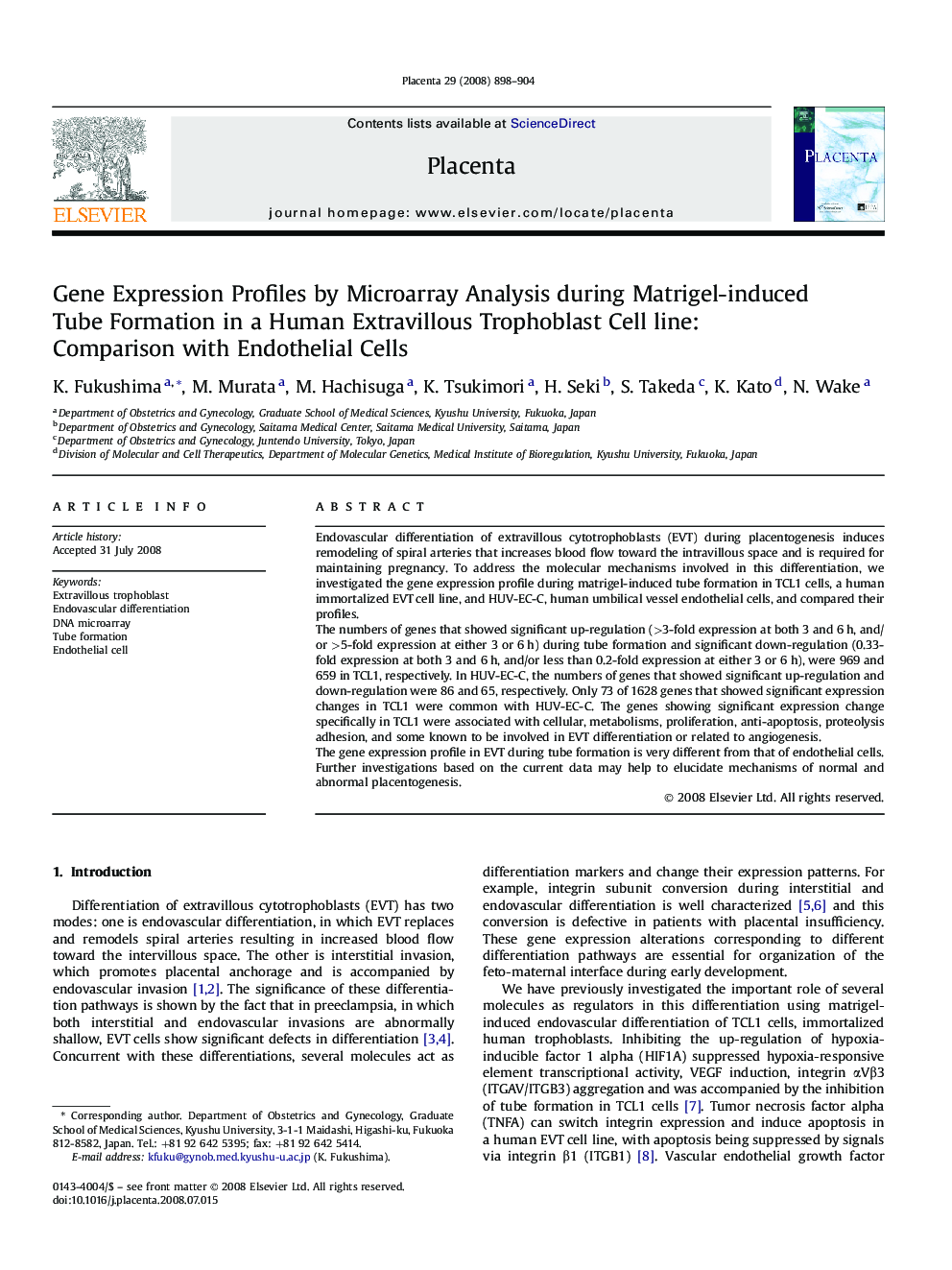| Article ID | Journal | Published Year | Pages | File Type |
|---|---|---|---|---|
| 2790050 | Placenta | 2008 | 7 Pages |
Endovascular differentiation of extravillous cytotrophoblasts (EVT) during placentogenesis induces remodeling of spiral arteries that increases blood flow toward the intravillous space and is required for maintaining pregnancy. To address the molecular mechanisms involved in this differentiation, we investigated the gene expression profile during matrigel-induced tube formation in TCL1 cells, a human immortalized EVT cell line, and HUV-EC-C, human umbilical vessel endothelial cells, and compared their profiles.The numbers of genes that showed significant up-regulation (>3-fold expression at both 3 and 6 h, and/or >5-fold expression at either 3 or 6 h) during tube formation and significant down-regulation (0.33-fold expression at both 3 and 6 h, and/or less than 0.2-fold expression at either 3 or 6 h), were 969 and 659 in TCL1, respectively. In HUV-EC-C, the numbers of genes that showed significant up-regulation and down-regulation were 86 and 65, respectively. Only 73 of 1628 genes that showed significant expression changes in TCL1 were common with HUV-EC-C. The genes showing significant expression change specifically in TCL1 were associated with cellular, metabolisms, proliferation, anti-apoptosis, proteolysis adhesion, and some known to be involved in EVT differentiation or related to angiogenesis.The gene expression profile in EVT during tube formation is very different from that of endothelial cells. Further investigations based on the current data may help to elucidate mechanisms of normal and abnormal placentogenesis.
